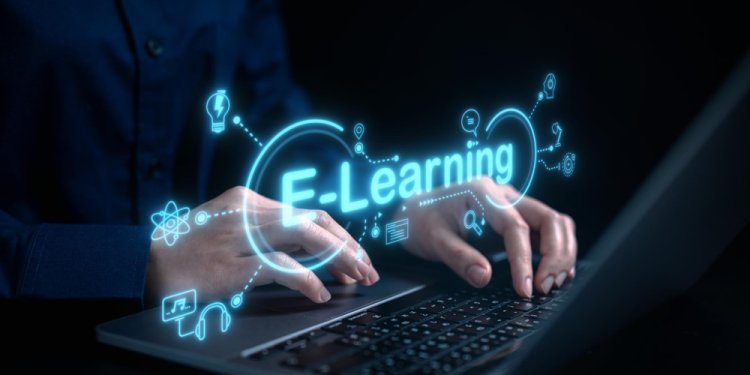Role of technology in improving blended learning services
Technology plays a big role in making sure blended learning serves its intended purposes. This article explains the concept of blended learning providers alongside the role technology plays in making blended learning happen.

Blended learning services are leading the revolution of the education sector. These services seamlessly integrate the traditional classroom teaching method with the new e-learning methods. With blended learning learners can get the best of two worlds.
Technology plays a big role in making sure blended learning serves its intended purposes.
This article explains the concept of blended learning providers alongside the role technology plays in making blended learning happen.
Role of technology in enhancing blended learning services
Following are the main ways through which technology helps in improving blended learning solutions overall:
- Offering flexible learning paths
Every learner is different and prefers a different learning pace and style. The traditional teaching methods like the classroom setting fails to consider these individual differences. But with the help of technology, blended learning can offer personalized learning paths and flexible learning times.
One who prefers listening to the lectures is satisfied and the one who likes to read in silence is also satisfied. Flexible learning time refers to the fact that with blended learning, learners can learn whenever and wherever they want. Whether they are on a bus or waiting in a long queue, they can learn on their phone.
- Making learning accessible for everyone
Education should never be a luxury. Technology is trying to bridge the gap between the reality of the education sector and what it should be like. With the help of technology, blended learning services offer learning opportunities to more learners and places than ever was possible. Technological advancements make the learning material available to learners anytime and anywhere. The learners only need a device with an internet connection to access the course material.
They also make education accessible to people who have physical or mental disabilities. There are certain features that are added to online material with the help of technology. These can be the availability of an alternative text or live captions. This way, the course material can be accessed by visually and hearing impaired learners.
- Makes data analysis easier
Data collection and analysis are at the core of blended learning. This not only helps in the management of learning material but also helps offer personalized learning experiences to the learners. The technology used in blended learning is the Learning Management System (LMS).
These are the software on which the learning material is stored and displayed for the learners to interact with it. This technological aspect helps track the progress of learners. The quizzes and tests online can also be checked with the help of technology. Further, the software will give suggestions and revision materials by itself.
- Incorporates a collaborative culture
In today’s world, being able to form connections is probably the most important skill a learner can learn. Long gone are the days of cramming and writing exams. The education system is facing a shift from passive learning and testing methods to an active approach to testing. The focus is on practical skills rather than marks. With the help of blended learning services, one can facilitate social learning for everyone.
The technology used by blended learning offers various ways through which learners can interact with each other. One such example is discussion forums. These forums are held online and the learners can solve each other's doubts and discuss the topics further. Blended learning also offers team tasks which are also conducted online
.
- Helps in motivating learners
The blended learning also proven to increase the engagement of the learners. In contrast to the traditional classroom teaching setting, blended learning offers a wide range of stimulating learning material. With the help of technology, the learning material is made into fun interactive elements.
The big book chapters can be converted into concise videos and quizzes which not only imparts knowledge but also tests the retention of the learners. Games related elements can also be added into the learning process. Some examples can be the addition of points, leaderboards, badges, etc. The collection of these virtual points makes the learners motivated to achieve more by completing the rest of the modules.
- Helps learners learn as per their skills
As discussed before, the best training modules with blended learning help track data and analyze it in real time. This tracking and analysis of data is used for different purposes. One such use of the data is carving the course as per the needs of an individual learner. The difficulty level, the learning style, and the timing, everything can be personalized.
The technical aspect of blended learning contrasts with traditional teaching methods and provides an active approach to learning. The students feel competent to achieve the goals when the goals are determined by analyzing their existing abilities. This not only gives them a sense of accomplishment but also motivates them further.
Signing Off
In the end, it can be concluded that technology plays a vital role in making blended learning a success in today’s world. As technology becomes an inseparable part of our society, the education sector is also benefiting from it. We can go as far as to say that blended learning cannot exist without the smart usage of technology. All the main benefits of blended learning are made possible with the help of technology.
What's Your Reaction?
















